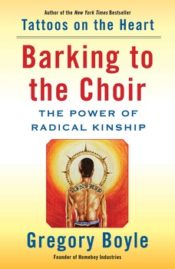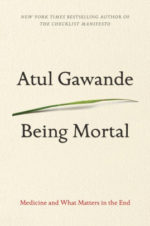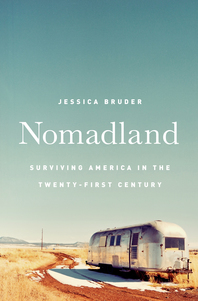Insanity or Courage?
Posted on | June 2, 2011 | Comments Off on Insanity or Courage?
Last evening, I had the pleasure of moderating a panel discussion at a reunion of Education Pioneers, an organization that looks for and trains out-of-classroom talent for education reform. The conversational stars of the evening were Maria Casillas, who flunked retirement to rejoin the Los Angeles Unified School District to head its efforts at connecting school and family, and Drew Furedi, who is working on the highly charged area of teacher assessment among other tasks as Policy and Program Development Advisor.
The Pioneers ask me to make some opening remarks, an approximation of which follow.
Einstein or Churchill?
It has come to my attention that reforms recycle. Recycling may be good for the environment, but what of educational progress? It depends on whether you believe Einstein or Churchill.
Einstein’s definition of insanity was “doing the same thing over and over again and expecting different results.” Winston Churchill’s definition of courage was “moving from failure to failure with undiminished enthusiasm.” So which is it?
The distinction is topical because in Learning from L.A. (notes to the book here) we found that virtually every school reform effort in Los Angeles Unified contained the same four elements: some form of decentralization, a quest for universal high standards and measurements that were fair and transparent, greater community and parent involvement, and greater variety in school offerings and choice among them. These four elements could be found in reports from the district in the 1980s, the LAAMP and LEARN reforms of the 1990s, and ideas being worked through by the new superintendent, John Deasy.
Insane or courageous? It depends. It’s courageous to keep at the struggle, but it’s insane to do it badly: to struggle without knowledge about how the system works and how it can be moved. And no organization I know is less mindful of its own history than LAUSD.
So let us speak of history beginning with national education politics.
Beginning with the 2000 presidential election there was a convergence between Democratic and Republican reform ideas. These were enshrined in the bipartisan reauthorization of the Elementary and Secondary Education Act known as No Child Left Behind: greater accountability, a drift toward national standards, and tests, tests, tests. The old liberal mantra “all children can learn,” became a legal expectation.
The broad political convergence has broken apart. The Obama Democrats want to follow the reform path laid out in 2000: fix NCLB, get explicit about national standards, rework expectations so that movement forward rather than absolute achievement targets count, and create competition between the states. The Republicans want radical change: they want to privatize education and gradually institute voucher-like plans. (See Indiana governor Mitch Daniels speech to the American Enterprise Institute.) But most of all they want to destroy or deeply weaken public sector unions.
Let’s be clear about this. Gov. Scott Walker’s attack on Wisconsin’s employees had nothing to do with balancing the budget. It was a bellwether, testing whether the Republican Party could remove the last vestige of organized power in the United States other than rich people and corporations. In an era where our feckless Supreme Court has declared corporations to be people for the purposes of political participation, disestablishing public sector unions removes the last barrier between you and a Tea Party blend. There are no moderate Republicans left.
California and Los Angeles have been the political exceptions, both because of a Democratic governor and legislature and because the education reform community is arrayed somewhat differently. Except on the question of taxes, it is more bipartisan. The mayor, a Democrat, has become a counterpuncher to United Teachers Los Angeles. Parents and community organizations are finding their voice. Charter schools have moved from startup status to an organized interest group. The old business that formed city’s elite have died. The oligarchs and the foundations have tried to buy and bully their way into control. The L.A. Compact is trying to draw together a new civic leadership. And a new generation of activists seek to find the levers of power: the Education Pioneers, NewTLA, the TFA alums, and others.
Portfolios of schools
There is no grand plan here, just the bump and rub of retail politics, but there is a direction, a trend, a drift from big to small, from hierarchy to network, from direct government to indirect government. The term of art is portfolio.
LAUSD has followed the vibe of Chicago, Philadelphia, New York, and New Orleans in embracing the idea of a portfolio of schools. Under the portfolio notion, which owes its conceptualization to the writing of Paul Hill, instead of managing single hierarchy, the job of the school district is to assemble the best group of schools it can. It will run some of them directly, some will be charters, and some will have will be operated under contract. It will relentlessly examine results, prod schools toward measurable achievement, and replace underperforming parts of the portfolio.
Nationwide, we now have a reasonable research literature about how these schools work. It includes The Transformation of Great American School Districts, edited by William Lowe Boyd, Mark Blyth and me, which puts the portfolio idea in the context of a changing idea of an institution. Between Public and Private, edited by Katrina Bulkley, Jeffrey Henig and Henry Levin, examines the portfolio idea as a change from direct government to contracting regimes and includes recent case studies of New York, New Orleans, Chicago, and Philadelphia. The most recent of the books is Education Reform in New York City edited by Jennifer O’Day, Catherine Bitter, and Louis Gomez. I also recommend Smart Money, a collection of papers about how to align school finance with student achievement, edited by Jacob Adams. For those interested in a sweep of history look at education politics, read Shaping Education Policy edited by Douglas Mitchell, Robert Crowson and Dorothy Shipps.
I argue that L.A. has done a better job of this than either New York or Chicago, and that the very messiness of Los Angeles politics makes it more likely that the portfolio notion will take root here and survive than it will in either Daley’s Chicago or Bloomberg’s New York. Precisely because the politics of L.A. is more improvisational, we have developed more species variety in schools than exist in other places. You know the numbers: 170 magnet schools, 160 charters, 25 Pilot Schools, reconstituted schools, the Mayor’s Partnership. More are on the way.
Both in Los Angeles and the nation, the portfolio idea has had interesting effects: more small schools, some new ideas, and new people brought into education reform efforts. But overall, the idea hasn’t worked the way its original proponents thought it would.
- Market forces have not caused bad schools to close. No locality has established a market capable of doing so.
- The central office has not wilted away. Indeed, there is evidence that schools with autonomous operating authority need services and information. The capacity of the central organization is important, and in no city I know of has this capacity been as undermined as it has in Los Angeles. [Which brings up an important design question. How big should Beaudry be?]
- A focus on centralized power—through mayors or the state—has not made ordinary politics go away; it has only suppressed it and built resentment.
- Focusing on governance and management reform, does not automatically bring about educational reform.
This last point requires expansion, and brings up the thought I want to leave you with this evening. When we finished LLA, we observed that virtually all the school reform plans assumed trickle down education change. Change what adults do, and kids will get smarter. Hardly any of the education reform effort has been directed toward deliberately changing how students learn.
This needs to change. By focusing political energy on how students learn rather than the long list of hot button issues—tenure, teacher evaluation, charter schools, Parent Triggers—it is possible to design a truly modern education system that is a worthy successor to the industrial-era public education structure that served the state well for a century. Only when we do this will we get beyond permanent crisis.
That’s my goal in the series of posts about Learning 2.0, which at is core has five elements around which we can build an education system. We need to remind ourselves that the students are the real workers in this system, and to provide “jobs” that motivate them. We need to customize rather than batch process schooling. We need to recognize that the basic skills for the 21st Century are not the same as those for the 19th or 20th. We need to bring education for head and hands together rather than relentlessly separate them. And we need unbundle education, breaking down the connection between seat time and achievement, teaching and testing.
So my bottom line is this: If we don’t focus on learning, its insanity; if we do it will take courage. It will take courage to recognize that neither political party’s direction will solve the problem of high achievement levels for all, and it will take courage, and stamina, to build a new political coalition.
Tags: Drew Furedi > Education Pioneers > LAAMP > LEARN > Maria Casillas




